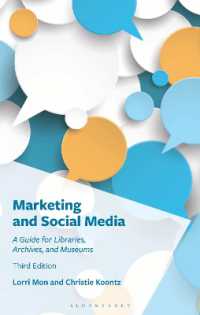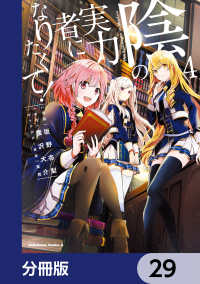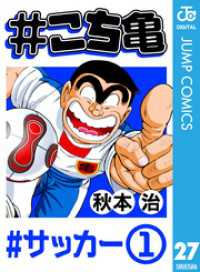Full Description
This innovative STEAM guide will help general and special education teachers to increase effective instruction with adolescents (grades 5-10). The authors show teachers how to link STEM concepts with popular fiction and film selections as a catalyst to launch student interactions, discussions, projects, and investigations. This approach will promote problem solving and reasoning skills by initiating the scientific process, rather than simply presenting established facts. The book includes a wealth of lesson plans that connect abstract STEM ideas to realistic experiences that students encounter. Sample lessons call on students to produce drawings and models that move STEM to STEAM. Grounded in popular film and the 31 books most read by adolescent students, the text includes teaching strategies found to be effective with traditionally underserved students and those with disabilities.Book Features:
Standards-based STEM lessons are interrelated and interwoven with writing, reading, speaking, and other skills.
Practical ideas and hands-on activities for engaging adolescents in both traditional and virtual environments.
Guidance for working with diverse populations, such as students with different abilities, culturally and linguistic diverse students, translingual students, and transnational students.
Includes full lessons, templates, and handouts
Contents
Preface
1. STEM and Literature: Exploring New Options — Gloria D. Campbell-Whatley and Diane Rodriguez
From Mainstreaming to Inclusion: The Journey Begins
The Birth of Multi-Tiered Support Systems (MTSS)
Students with Disabilities in the Urban Environment
The Benefits of STEM and Literature
Summary and Other Tidbits
2. Culturally Responsive Problem Based Learning (CRPBL) — Gloria D. Campbell-Whatley and Richard Reynolds
PBLs Best Practices: Finding Solutions
Innovations in Instruction for Problem Based Learning in STEM
Culturally Responsive Teaching
Culturally Responsive PBL (CRPBL)
Summary: Recommendations for Teachers
3. Selection of Reading Materials, Technology, and STEM Activities — Diane Rodriguez, Jugnu Agrawal, Justin Coles, and Gary Hoag
Using Literature to Teach STEM in the Interdisciplinary Classroom: Selecting a Book
Using High Leverage Practices and Strategies for Students with Disabilities
Supporting Learning in Virtual Environment/Distance Learning
Summary
4. Science and Literature — Gloria Campbell-Whatley, Kim Reddig, and Deondra Gladney
Science and Literature for Adolescents
Careers
Teachers Application Tips
Summary of Lessons
Lesson 4.1: Science Vocabulary, The Twilight Saga
Lesson 4.2: Science on Cells, The Immortal Life of Henrietta Lacks
Lesson 4.3: Science and Clean Water, The Boy Who Harnessed the Wind
Lesson 4.4: Medicine and Drugs, Percy Jackson and the Lightning Thief
Lesson 4.5: Gravity, Weight, and Mass, Ender's Game
Lesson 4.6: Respiratory System, After Earth
Lesson 4.7: Genetics, Gattaca
Lesson 4.8: Energy, The Matrix
Lesson 4.9: Desert Plants and Animals, Holes
Lesson 4.10: Assistive Technology, Star Wars
5. Mathematics and Literature — Jugnu Agrawal, Gary Hoag, Ozalle Toms, Ann Jolly, Elizabeth Reyes, and Ashley Voggt
Mathematics and Adolescents
Teacher Application Tips
Careers
Lesson Plans
Lesson 5.1: Statistics and Probability, To Kill a Mockingbird
Lesson 5.2: Basic Algebra and Statistics, The Hunger Games
Lesson 5.3: Business Plan, Born a Crime
Lesson 5.4: Geometry and Calculus, Hidden Figures
Lesson 5.5: Mysticism of the Pyramids, The Giver
Lesson 5.6: Weather Mathematics, The Chronicles of Narnia
Lesson 5.7: Geometry, Flatland
6. Engineering and Literature — Diane Rodriguez, Gloria Campbell-Whatley, Kevin Otero ,Hassan Payano, Maria Payano, Eileen Interiano, and Sharon Hunter
Engineering for Adolescents
Careers
Tips for Teachers
Summary of Lessons
Lesson 6.1: Engineering Robotics, The Maze Runner
Lesson 6.2: Engineering Construction and Building, Harry Potter
Lesson 6.3: Drone Engineering, Men in Black
Lesson 6.4: Engineering Trains, The Snowpiercer
Lesson 6.5: Satellite Engineering, Star Trek
Lesson 6.6: Engineering Cyborgs, The Terminator
Lesson 6.7: Software Engineering, Jumanji
Lesson 6.8: Aerospace Engineering, Minority Report
Lesson 6.9: Engineering and Space Travel, The Martian
Lesson 6.10: Biofuels, Back to the Future
7. Technology and Literature — Jugnu Agrawal and Wen-Hsuan Chang
Technology Related Careers
Teacher Application Tips
Summary of the Unit
Lesson 7.1: Identifying Credible Sources, Hidden Figures
Lesson 7.2: The Use of Citation sand Presentations, Hidden Figures
Lesson 7.3: Making use of Digital Media, Hidden Figures
Lesson 7.4: Using Technology to Update Writing Products, Hidden Figures
Lesson 7.5: Digital Citizenship and Technology Integration, Hidden Figures
Lesson 7.6: Webcams and Identifying Central Themes, Hidden Figures
Lesson 7.7: Digital Footprint, Hidden Figures
Lesson 7.8: Assistive Technology Innovations, Hidden Figures
Lesson 7.9: Digital Story Telling, Hidden Figures
Lesson 7.10: 3D Print, Hidden Figures
Index
About the Authors








